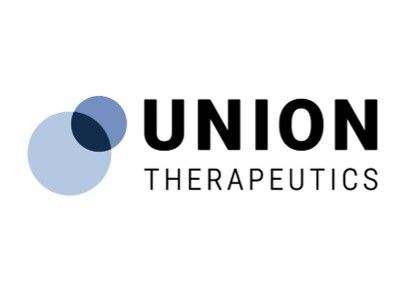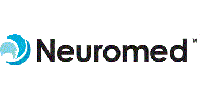预约演示
更新于:2025-08-29

UNION Therapeutics A/S
更新于:2025-08-29
概览
标签
免疫系统疾病
皮肤和肌肉骨骼疾病
遗传病与畸形
小分子化药
疾病领域得分
一眼洞穿机构专注的疾病领域
暂无数据
技术平台
公司药物应用最多的技术
暂无数据
靶点
公司最常开发的靶点
暂无数据
| 排名前五的药物类型 | 数量 |
|---|---|
| 小分子化药 | 3 |
| 排名前五的靶点 | 数量 |
|---|---|
| PDE4B x PDE4D | 1 |
| PDE4D(phosphodiesterase 4D) | 1 |
关联
3
项与 UNION Therapeutics A/S 相关的药物靶点- |
作用机制 线粒体氧化磷酸化解偶联剂 |
最高研发阶段临床2/3期 |
首次获批国家/地区- |
首次获批日期- |
作用机制 PDE4B抑制剂 [+1] |
原研机构 |
最高研发阶段临床2期 |
首次获批国家/地区- |
首次获批日期- |
靶点 |
作用机制 PDE4D抑制剂 |
在研适应症- |
非在研适应症- |
最高研发阶段临床前 |
首次获批国家/地区- |
首次获批日期- |
11
项与 UNION Therapeutics A/S 相关的临床试验NCT05469464
A Randomized, Double-Blind, Placebo-Controlled, Parallel-Group, Phase 2b Dose-Ranging Study to Evaluate the Efficacy and Safety of Orismilast in Adults With Moderate to Severe Atopic Dermatitis
This study investigates 3 different doses of orismilast modified release compared to placebo in adult patients with moderate-to-severe atopic dermatitis. The purpose of the study is to assess the effect of orismilast modified release in moderate-to-severe atopic dermatitis and assess the safety aspects of these 3 different doses. The patients will receive an oral treatment of either orismilast modified release tablets or placebo tablets 2 times a day for 16 weeks.
开始日期2022-07-11 |
申办/合作机构 |
NCT05190419
A Randomized, Double-Blind, Placebo-Controlled, Parallel-Group, Phase 2b Dose-Ranging Study to Evaluate the Efficacy and Safety of Orismilast in Adults With Moderate-to-Severe Plaque-Type Psoriasis
This study investigates 3 different doses of orismilast modified release compared to placebo in adult patients with moderate-to-severe plaque-type psoriasis. The purpose of the study is to assess the effect of orismilast modified release in moderate-to-severe plaque-type psoriasis and assess the safety aspects of these 3 different doses.The patients will receive an oral treatment of either orismilast modified release tablets or placebo tablets 2 times a day for 16 weeks.
开始日期2021-12-30 |
申办/合作机构 |
NCT04982432
Orismilast for the Treatment of Mild to Severe Hidradenitis Suppurativa (OSIRIS)
The purpose of this study is to assess the efficacy and safety of oral administration of orismilast for treatment of mild, moderate, or severe hidradenitis suppurativa (HS) in adults.
开始日期2021-10-01 |
申办/合作机构 |
100 项与 UNION Therapeutics A/S 相关的临床结果
登录后查看更多信息
0 项与 UNION Therapeutics A/S 相关的专利(医药)
登录后查看更多信息
42
项与 UNION Therapeutics A/S 相关的新闻(医药)2025-05-19
·摩熵医药
注:本文不构成任何投资意见和建议,以官方/公司公告为准;本文仅作医疗健康相关药物介绍,非治疗方案推荐(若涉及),不代表平台立场。任何文章转载需要得到授权。自身免疫性疾病治疗领域正经历快速发展,靶向免疫抑制药物作为创新治疗手段,受到广泛关注。摩熵咨询近期发布的《自免药物(JAK抑制剂篇)市场研究专题报告》以其深入的行业洞察系统剖析了JAK抑制剂的作用机制、市场竞争格局及靶向药物未来趋势。本文将基于报告核心内容,揭示靶向免疫药物市场的四大关键趋势。 01医保政策为自身免疫靶向新药放量提供机遇 价格是带动自免药物放量的重要重要因素。各个产品纳入医保后放量迅速提升,而未进入医保的药物难以放量,如银屑病的司库奇尤单抗和古塞奇尤单抗形成鲜明对比。同一适应症低价药更受欢迎,如银屑病治疗上诺华的的司库奇尤单抗上市价格仅为3000元/支,相比疗效类似的依奇珠单抗的6300元/支销售更好。我国自免疾病患者人数众多,但大部分在基层,以银屑病为例,《2022银屑病基层治疗指南》指出我国700万银屑病患者75%首诊在基层,而基层患者难以负担高昂的药品价格,因此医保为自身免疫靶向药物放量提供了机遇。图片来源:摩熵咨询《口服降糖药市场专题研究报告》02新药物:全球Ⅲ期及以上JAK抑制剂有17款,多为二代选择性JAK抑制剂JAK抑制剂凭借口服便捷性与广谱抗炎作用,成为自免领域最热门的小分子靶向药物。2023年中国JAK抑制剂市场规模达21.5亿元,一代产品(托法替布、巴瑞替尼等)占比85.4%。然而,一代药物因泛JAK抑制导致心血管事件等安全性问题,限制其长期应用。二代选择性JAK抑制剂通过精准抑制亚型(如JAK1、TYK2)显著降低风险,成为研发焦点。据摩熵医药数据库统计,截至2024年12月,全球Ⅲ期及以上在研JAK抑制剂达17款,且多为二代选择性JAK抑制剂。这些新药物在提高疗效和减少副作用方面展现出巨大潜力。数据来源:摩熵医药数据库03新靶点:TSLP成药性得到验证,正大天晴TQC-2731已进入Ⅲ期临床胸腺基质淋巴生成素(TSLP)最初是从小鼠胸腺基质细胞系中分离出来,是一种与IL-7互为远距离旁系同源的,归属于短链α螺旋束Ⅰ型IL-2家族的多效细胞因子。TSLP与多种过敏性疾病,如特应性皮炎、支气管哮喘、嗜酸性粒细胞食管炎有关。Nature Reviews等文献数据显示,TSLP还与慢性炎症性疾病(如慢性阻塞性肺病和乳糜泻)和自身免疫性疾病(如牛皮癣、类风湿性关节炎)有关。TSLP靶点目前仅有安进和阿斯利康的特泽利尤单抗在欧盟和日本获批上市,用于治疗重度哮喘,其突破了治疗嗜酸性哮喘的局限,在广泛严重哮喘患者治疗中显示出突出的临床疗效。本土TSLP药物中,正大天晴的TQC-2731哮喘适应症已经进入Ⅲ期临床,慢性阻塞性肺病、鼻窦炎、鼻息肉等适应症也进入Ⅱ期临床。04新剂型:多款口服靶向药物正在路上近年来,自身免疫抑制性疾病的靶向治疗领域取得了显著进展,生物制剂的应用尤为突出,成功帮助众多患者实现了疾病的完全或近乎完全缓解。然而生物制剂(注射)仍未能全面满足所有患者的需求,诸如注射恐惧、存储条件限制及携带不便等问题,对部分患者构成了不小的挑战。鉴于此,乌帕替尼片、氘可来昔替尼片等新型口服小分子靶向药物应运而生,为患者提供了新的治疗选择。此外,还有数款口服靶向药物正处于临床研发阶段。TAK-279:是一种口服变构TYK2抑制剂,由Nimbus Ther-apeutics公司开发,于2022年被武田收购。Ⅱ期临床实验显示:在第12周时,TAK-279 15mg组和30mg组分别有53.3%和54.2%的患者达到ACR 20,而安慰剂组仅为29.2%。此外,TAK-279 30mg组和15mg组的银屑病面积和严重程度指数75缓解率也显著高于安慰剂组,分别为45.7%和28.3%,安慰剂组为15.4%,具有潜在临床应用价值。Orismilast:是一种新型口服磷酸二酯酶-4(PDE4)抑制剂,对PDE4B和PDE4D亚型具有更强的选择性。2023年,Union Therapeutics公司报告了orismilast的Ⅱb期临床试验结果。该研究中未发现新的安全信号,证实了PDE4类药物具有良好的安全性。Orismilast全球临床试验信息查询列表(部分)图片来源:摩熵医药全球临床试验数据库SAR441566:是赛诺菲目前正在研究的一款口服TNF抑制剂,通过扭曲可溶性TNFα三聚体的构象,阻断TNFα与TNFR1的相互作用,但该产品不会影响与细胞膜结合的TNFα的信号传导,可以更好降低感染风险并提高疗效。根据国家药监局药品审评中心官网显示,赛诺菲SAR441566的Ⅱ期临床试验申请获批准,用于治疗中重度斑块型银屑病,以及中重度类风湿性关节炎。05新治疗方式:CAR-T细胞疗法不断发展,研究领域逐渐扩展至自免疾病近年来,CAR-T细胞疗法在自身免疫性疾病治疗中展现了良好的应用前景,尤其是以CD19为靶点的疗法取得了显著进展。CD19作为B细胞特异性标志物,贯穿前B细胞至成熟B细胞的分化过程,成为B细胞耗竭疗法的关键靶点。为进一步提升疗效,部分研究探索了CD19/BCMA的双靶点策略,也展现出良好的应用潜力。2021年MOUGIAKAKOS等首次使用CD19 CAR-T细胞疗法治疗1例20岁难治性SLE患者。该患者存在多系统受累,表现为活动性狼疮肾炎、皮疹、关节炎、心包炎和胸膜炎,既往大剂量激素、多种免疫抑制剂及生物制剂治疗无效。研究者在仅保留小剂量激素的情况下,予患者清淋治疗(氟达拉滨+环磷酰胺)后回输自体来源CAR-T细胞。该患者在接受治疗第44天实现临床及血清学的完全缓解,SLE疾病活动度(SLE disease activity index,SLEDAI)评分从16分降为0分。随访6个月内,患者逐渐停用激素,且无疾病复发迹象。这一成功的初步尝试为后续的临床研究奠定了基础。全球CAR-T细胞疗法TOP10适应症分布图片来源:摩熵医药全球药物研发数据库2022年该团队进一步纳入5例中位年龄为22岁的难治性SLE患者,在CAR-T细胞回输后第3个月,所有患者的补体及抗双链DNA抗体滴度恢复正常,4例患者SLEDAI评分降至0分,1例患者为2分,在长达17个月的随访中均未出现复发,实现了无药缓解,治疗过程中仅观察到1级CRS事件。为进一步评估其远期疗效及安全性,2024年该团队报道了15例严重自身免疫性疾病患者接受CD19 CAR-T细胞治疗的研究结果,其中包括8例SLE。该研究显示,经过CAR-T细胞治疗后,所有患者在6个月后达到SLE低疾病活动状态,SLEDAI评分为0分,随访至29个月时仍保持无药缓解状态;在安全性方面,6个月的随访过程中仅观察到轻度的上呼吸道感染症状。上述临床研究证实了CAR-T细胞疗法在成人SLE治疗中的有效性、持久性及较好的耐受性。尽管CAR-T细胞疗法在部分难治性患者中显示出长期无药物缓解的疗效,但仍在生产难度、安全性、持久性等方面存在挑战。未来研究方向将集中于提高治疗的个性化,以期更好地管理疾病复发并减少不良反应。小结靶向免疫抑制药物市场在医保政策支持、新药研发、新靶点探索、新剂型涌现及新治疗方式拓展等多维度驱动下,正迎来前所未有的发展机遇。对于医药企业来说,紧跟市场趋势,加大研发投入,推出更多高效、安全、便捷的治疗药物,将是抢占市场份额、实现可持续发展的关键。END本文为原创文章,转载请留言获取授权自免药物(JAK抑制剂篇)市场研究专题报告完整报告领取方式近期热门资源获取数据透视:中药创新药、经典验方、改良型新药、同名同方的申报、获批、销售情况-2025042023H2-2024H1中国药品分析报告-2025042024年中国1类新药靶点白皮书-202503中国AI医疗健康企业创新发展百强榜单-202502解码护肤抗衰:消费偏好洞察与市场格局分析-2025022024年FDA批准上市的新药分析报告-2025012024年NMPA批准上市的新药分析报告-2025012024年医保谈判及市场分析报告-2025.012024年中国医疗健康投融资全景洞察报告-202501小分子化药白皮书(上)-2025012024医美注射材料市场发展分析报告-202412中国放射性药物产业白皮书-202410近期更多摩熵咨询热门报告,识别下方二维码领取联系我们,体验摩熵医药更多专业服务会议合作园区服务数据库咨询定制服务媒体合作👆👆👆点击上方图片,即可开启摩熵化学数据查询点击阅读原文,申请摩熵医药企业版免费试用!
临床3期免疫疗法
2025-04-12
·小药说药
-01-引言:银屑病治疗需求的迫切性银屑病是一种由遗传、免疫及环境因素共同诱发的慢性自身免疫性皮肤病,影响全球2-3%的人口。它与角质形成细胞增殖异常有关,临床特征为红斑、界限清晰的丘疹和圆形斑块。大约75%的银屑病患者至少有一种合并症,其中银屑病关节炎最为常见。银屑病病程长、易复发、合并症多(如心血管疾病、关节炎等),对患者生活质量造成严重损害。银屑病是环境和遗传因素之间复杂相互作用的结果,涉及先天和适应性免疫系统的异常反应,导致皮肤损伤。在过去的15年中,研究已经表明TH17/ IL-17通路在银屑病的发病机制中起着主要作用,而炎症介质如IL-17、IL-23和肿瘤坏死因子(TNF)是治疗的关键靶点。尽管传统疗法(如糖皮质激素、光疗)长期占据主导,但近年来生物制剂和口服靶向药的突破正重塑治疗格局。-02-一、已获批的疗法银屑病的治疗取决于疾病的类型、部位和程度。大多数局限性斑块型银屑病可以用局部糖皮质激素治疗,然而长期使用可能会因疗效丧失和皮肤萎缩而变得复杂。钙三烯(一种维生素D类似物)和他扎罗汀(一种视黄酸衍生物)也能有效治疗局限性银屑病。紫外线是许多广泛银屑病患者的有效治疗方法,但它可能会增加皮肤癌症的发病率,应谨慎应用于免疫功能低下的患者。各种全身性药物可用于严重、广泛的银屑病。如甲氨蝶呤,尤其是对银屑病关节炎患者;有时也会使用其他免疫抑制剂,包括羟基脲、6-硫鸟嘌呤、硫唑嘌呤和环孢菌素。阿曲汀是一种口服类视黄醇,也可用于治疗严重的银屑病,但其受到致畸性的限制。阿普雷司特是一种口服磷酸二酯酶4(PDE4)抑制剂,已被批准用于银屑病和银屑病关节炎。在过去的二十年里,靶向促炎细胞因子的多种生物制剂由于其强大的疗效和可接受的耐受性,已成为中重度斑块型银屑病的重要治疗选择。从2004年起,首批获批的生物药是抑制TNF的单克隆抗体,包括依那西普、英夫利昔单抗和阿达木单抗。自那以后,抑制TH17/IL-17途径的单克隆抗体也加入了市场,从2009年开始使用ustekinumab,一种IL-12和IL-23的抑制剂,靶向包括TH17/IL-18途径在内的多种TH细胞途径。靶向IL-17家族成员或其受体的几种单克隆抗体也已获得批准,包括secukinumab、ixekizumab和brodalumab,以及靶向IL-23的单克隆抗体,包括risankizumab、tildrakizumab和guselkumab。-03- 二、新兴疗法Deurefacitinib是酪氨酸激酶2(TYK2)的口服选择性抑制剂,分别于2022年和2023年被美国食品药品监督管理局(FDA)和欧盟批准用于治疗成人中重度斑块型银屑病。Deurefacitinib介导参与银屑病发病机制细胞因子的信号传导,这是唯一一种被批准的选择性靶向JAK激酶家族成员TYK2的疗法。JAK抑制剂也被批准用于其他免疫炎症性疾病,但有严重不良事件有关,FDA在所有JAK抑制剂的标签上都有黑框警告。而Deurefacitinib的作用机制与其他JAK抑制剂不同,因为它与变构位点而非ATP结合位点结合,其对TYK2的选择性可能会限制其副作用。因此,目前FDA在其标签中没有加入黑框警告。在支持批准deurefacitinib的III期临床试验(POETYK PSORIASIS-1和POETYK-PSORIASIS-2)中,58%和53%的患者在第16周的银屑病面积和严重程度指数评分(PASI75)改善了75%或75%以上,而安慰剂组的改善率为13%和9%,而接受apremilast对照组的患者治疗改善率分别为35%和40%。此外,在第16周时,36%和27%的Deurefacitinib给药患者达到PASI90,而在接受apremilast治疗的患者中,这一比例分别为20%和18%。Deurefacitinib也显示出长期疗效,82%的患者在第24周达到PASI75,并维持到第52周。武田正在开发另一种TYK2抑制剂TAK-279,用于治疗银屑病。TAK-279的IIb期临床试验的阳性结果于2022年11月公布。在第12周,与安慰剂(6%)相比,接受TAK-279的患者中有更大比例达到PASI75,5 mg、15 mg和30 mg剂量组分别为44%、68%和67%。第三阶段研究已于2023年10月开始。另一方面,Ventyx Biosciences基于II期试验结果停止了用于治疗银屑病的TYK2抑制剂VTX958的开发。在II期试验中,其达到了主要疗效终点,但疗效的大小没有达到期望的目标。Bimekizumab(Bimzelx;UCB Pharma)是一种抑制TH17/IL-17通路的单克隆抗体,于2022年在欧盟和英国被批准用于治疗银屑病,2023年在美国被批准用于银屑病。与其他IL-17靶向单克隆抗体不同,Bimekizumab同时抑制IL-17A和IL-17F。另一种正在开发中的抑制TH17/IL-17途径的潜在疗法是口服小分子IL-17抑制剂DC-806。2022年,DICE Therapeutics公布了DC-806治疗银屑病的I期试验的阳性数据,报告称高剂量组在4周时PASI比基线平均减少44%,而安慰剂组为13%。DICE于2023年被礼来公司以24亿美元收购,DC-806目前处于II期研究中。DC-853是一种口服的下一代化合物,与DC-806相比,其效力和代谢稳定性有所提高,目前处于I期研究中。Union Therapeutics正在开发一种新一代高效PDE4抑制剂Orismilast。在一项IIa期研究中,与安慰剂相比,使用Orismilast治疗在第16周可显著改善PASI评分。此外,在健康受试者中,Orismilast的改良释放制剂显示出相似的药代动力学特性和较少的胃肠道副作用,后续开发将基于改良释放制剂。2023年报告的IIb期结果显示,40-49%的患者在第16周达到PASI75,而接受安慰剂治疗的患者为17%。没有发现新的安全信号,证实了PDE4抑制剂的良好安全性。 另一种治疗银屑病的PDE4抑制剂是ME3183,它正在由Meiji Pharma开发。2023年8月,ME3183在二期试验中达到PASI75的主要终点。该疗法显示早期PASI改善,并显示出良好的耐受性。JNJ-2113是一种IL-23受体的肽抑制剂,口服给药。在FRONTIER 1的 IIb期试验中达到了主要终点,37–79%接受不同剂量的JNJ-2113的患者在第16周达到PASI75,而接受安慰剂的患者为9%。最后,用于治疗斑块型银屑病的口服TYK2/JAK1抑制剂TLL018-205(HighlightLL Pharma)的II期试验正在进行中。-04-三、银屑病药物的市场分析在截至2023年6月的12个月内,全球银屑病药物市场价值约340亿美元,约占免疫疾病总市场的30%。美国仍然是银屑病疗法的主导国家市场,约占总销售额的78%、,在过去五年中,它以约18%的复合年增长率增长。IL-23抑制剂risankizumab和guselkumab以约31%的市场份额主导美国银屑病市场,其次是IL-17抑制剂ixekizumab和secukinumab,约占23%l;TNF抑制剂占23%,ustekinumab占13%。Deurefacitinib是美国银屑病市场的最新进入者,根据BMS的数据,2023年第三季度,deucreacitinib在美国的销售额为6200万美元。自2022年9月批准以来,该疗法的接受率一直很低,主要是由于来源和报销有限;然而,随着人们对口服药物治疗越来越感兴趣,这种情况预计在未来几年会发生变化。目前,全球银屑病市场的前景看起来很有希望,预计2023年至2030年的复合年增长率为8-10%。这一增长将主要由人口老龄化、几种新的口服疗法的引入以及政府提高银屑病防治意识举措的扩大推动。按照目前的增长速度,预计到2030年市场规模将达到580亿至670亿美元。然而,随着阿达木单抗的生物仿制药进入美国市场,新疗法将受到越来越多生物仿制药的挑战。其他领先的生物制剂,包括ustekinumab、ixekizumab和secukinumab,将在不久的将来失去美国市场的排他性,也将面临生物仿制药的竞争。-05-结语银屑病治疗市场的增长与挑战正成为全球医药行业关注的焦点。从市场规模来看,人口老龄化是核心驱动力之一。人口老龄化明显地推动了银屑病市场的增长,这一趋势推动全球银屑病市场规模从2022年的265亿美元攀升至2030年的600亿-670亿美元。新型靶向药物彻底改变了治疗格局。以IL-12/23、IL-17等为靶点的生物制剂因精准抑制炎症通路,副作用更少,市场份额快速提升。口服JAK抑制剂和小分子药物的兴起也丰富了治疗选择。尽管前景乐观,行业仍面临多重挑战:研发成本攀升、专利悬崖集中到来,以及新兴市场支付能力不足。未来,组合疗法开发、真实世界证据应用,以及AI驱动的药物发现平台,或将成为企业建立竞争壁垒的关键。参考资料:1. The pipeline and market for psoriasis drugs. Nat Rev Drug Discov. 2024 Jan 31公众号内回复“ADC”或扫描下方图片中的二维码免费下载《抗体偶联药物:从基础到临床》的PDF格式电子书!公众号已建立“小药说药专业交流群”微信行业交流群以及读者交流群,扫描下方小编二维码加入,入行业群请主动告知姓名、工作单位和职务。
基因疗法免疫疗法临床研究
2025-02-21
Poster presentation of preliminary data from the Phase 2a investigator-initiated study UCORIS in ulcerative colitis (UC) at the 20th ECCO Congress
UC is a chronic inflammatory bowel disease that causes inflammation and ulcers (sores) in the lower digestive tract with limited efficacious treatment options available
Orismilast is a high-potency PDE4B/D inhibitor with broad anti-inflammatory properties in development for oral treatment of inflammatory diseases, including hidradenitis suppurative (HS)
HELLERUP, Denmark, Feb. 21, 2025 /PRNewswire/ -- UNION therapeutics A/S (UNION), a privately-held, clinical stage, pharmaceutical development company focused on immunology, today announced a poster presentation on new clinical data of oral orismilast in patients with UC at the 20th European Crohn's and Colitis Organisation (ECCO) congress on February 19-22, 2025, in Berlin, Germany.
UCORIS is a Phase 2a, open-label, investigator-initiated study investigating the efficacy and safety of oral orismilast for up to 12 weeks in adult patients with moderate and severe UC. Following the inclusion of 10 patients, the enrollment for the study has stopped with the study expected to be completed in 2025. The preliminary data from the proof-of-concept study suggests that orismilast exhibits therapeutic potential in moderate-to-severe ulcerative colitis, with three patients achieving complete remission.
Poster details
Poster title: Orismilast for the Treatment of Moderate to Severe Ulcerative Colitis: A phase 2a, open-label, single-arm explorative clinical study
Authors: Trine Velte Honoré, Flemming Bendtsen, Jakob Seidelin, Johan Burisch
Kim Kjøller, Chief Executive Officer of UNION therapeutics said:
"We are encouraged by the investigators' presentation of preliminary data on orismilast for the treatment of ulcerative colitis at the ECCO congress. UC is a systemic autoimmune bowel disease where a high unmet medical need persists for effective and safe treatments."
About UC and treatment of UC
Ulcerative colitis (UC) is a chronic inflammatory bowel disease that causes inflammation and ulcers (sores) in the lower digestive tract, i.e. colon and rectum. More than 1.8 million patients are diagnosed with UC in the US, Japan and EU5 and the incidence of UC is increasing worldwide1). Despite the treatment options available today, an unmet medical need for safe oral treatments with improved efficacy remains. UC is a disease that can be in remission (less active) for longer periods of time and then suddenly flare (termed "relapse"). During periods of relapse, patients experience a significant impact on their everyday lives, experiencing symptoms such as bloody stool, diarrhea, fecal incontinence, increased frequency of bowel movements (urgency), fatigue, and abdominal pain (cramps).
Depending on the severity of UC and patient preferences, the treatment is tailored accordingly. Patients with mild UC are often treated with mild anti-inflammatory medication, taken orally or rectally, such as aminosalicylates, corticosteroids or immunomodulators. Patients with moderate to severe UC are often treated with immunosuppressants, biologics or a combination of such treatments. Overall, treatments aim to induce a rapid clinical response and maintain remission, ideally healing the ulcers and preventing long-term disability.
About orismilast
UNION is developing orismilast, a high-potency PDE4 inhibitor targeting the PDE4B/D subtypes linked to inflammation, demonstrating potent inhibition of Th1, Th2 and Th17 pathways. It operates early in the inflammation cascade, inducing a broad range of anti-inflammatory effects across multiple cytokines involved in many dermatological and immunological diseases.2)
Orismilast holds the potential to become a safe and efficacious oral treatment for several immunological diseases3), and UNION is currently developing oral orismilast for the treatment of hidradenitis suppurativa (HS).
The FDA has cleared UNION's Investigational New Drug (IND) application for oral orismilast and granted Fast Track designation for oral orismilast for the treatment of moderate to severe HS as well as for the treatment of moderate to severe atopic dermatitis.
Sources
EvaluatePharma (2024).
Silverberg J.I. et al., Pharmacology of orismilast, a potent and selective PDE4 inhibitor, JEADV 2022: & Warren R.B. et al., Efficacy and safety in moderate-severe psoriasis and development of modified release tablets, JEADV 2022:
Warren R.B. et al., Orismilast in moderate-to-severe psoriasis: Efficacy and safety from a 16-week, randomized, double-blinded, placebo-controlled, dose-finding, and phase 2b trial (IASOS), J Am Acad Dermatol 2024: & Silverberg J.I. et al., Orismilast, a PDE4B/D inhibitor, in moderate-to-severe atopic dermatitis: Efficacy and safety from a multicenter, randomized, placebo-controlled, phase 2b dose-ranging study (ADESOS), Br J Dermatol 2025: . Frederiksen et al., JEADV 2023: .
Contacts
Morten Boesen, Chief Financial Officer, UNION therapeutics A/S
+45 2381 5487
[email protected]
About UNION therapeutics
UNION therapeutics is a privately held, clinical stage, pharmaceutical development company focused on immunology. UNION is headquartered in Hellerup, Denmark, and led by an international team combining biotech entrepreneurs and seasoned pharma executives, with a track record of developing and launching multiple marketed drugs. Read more at
This information was brought to you by Cision
WANT YOUR COMPANY'S NEWS FEATURED ON PRNEWSWIRE.COM?
440k+
Newsrooms &
Influencers
9k+
Digital Media
Outlets
270k+
Journalists
Opted In
GET STARTED
临床2期快速通道临床结果
100 项与 UNION Therapeutics A/S 相关的药物交易
登录后查看更多信息
100 项与 UNION Therapeutics A/S 相关的转化医学
登录后查看更多信息
组织架构
使用我们的机构树数据加速您的研究。
登录
或

管线布局
2025年12月26日管线快照
管线布局中药物为当前组织机构及其子机构作为药物机构进行统计,早期临床1期并入临床1期,临床1/2期并入临床2期,临床2/3期并入临床3期
临床前
1
1
临床2期
临床3期
1
2
其他
登录后查看更多信息
当前项目
| 药物(靶点) | 适应症 | 全球最高研发状态 |
|---|---|---|
Orismilast ( PDE4B x PDE4D ) | 重度特应性皮炎 更多 | 临床2期 |
ATx1.1 (Union Therapeutics A/S) | 肺部感染 更多 | 终止 |
ATx5.1 (Union Therapeutics A/S) | 泌尿道感染 更多 | 终止 |
氯硝柳胺 | 中度特应性皮炎 更多 | 无进展 |
登录后查看更多信息
药物交易
使用我们的药物交易数据加速您的研究。
登录
或

转化医学
使用我们的转化医学数据加速您的研究。
登录
或

营收
使用 Synapse 探索超过 36 万个组织的财务状况。
登录
或

科研基金(NIH)
访问超过 200 万项资助和基金信息,以提升您的研究之旅。
登录
或

投资
深入了解从初创企业到成熟企业的最新公司投资动态。
登录
或

融资
发掘融资趋势以验证和推进您的投资机会。
登录
或

生物医药百科问答
全新生物医药AI Agent 覆盖科研全链路,让突破性发现快人一步
立即开始免费试用!
智慧芽新药情报库是智慧芽专为生命科学人士构建的基于AI的创新药情报平台,助您全方位提升您的研发与决策效率。
立即开始数据试用!
智慧芽新药库数据也通过智慧芽数据服务平台,以API或者数据包形式对外开放,助您更加充分利用智慧芽新药情报信息。
生物序列数据库
生物药研发创新
免费使用
化学结构数据库
小分子化药研发创新
免费使用

